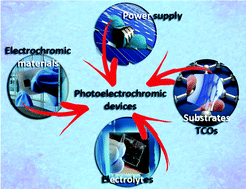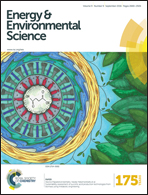Forthcoming perspectives of photoelectrochromic devices: a critical review
Abstract
Re-thinking our relationship with energy resources and environmental equilibrium, towards anthropogenic sustainability, calls for innovative and energetically wise technologies. Smart devices adjusting their optical behaviour depending on the environmental conditions will allow remarkable energy savings. To this end, photoelectrochromic devices (PECDs) have captured, in the last two decades, the interest of many research groups and industrial players worldwide. These devices encompass a dual behavior, being able to generate energy and, concomitantly, deliver a smart optical response. For this reason, they are the ideal skins of future buildings, capable of modulating their behavior in response to changing external stimuli, like sunlight irradiance. PECDs have a wide range of applications, from solar shading in architectural glazing to rear view mirrors in automotives, or avionics. This review article explores the different design concepts standing at the basis of the devices that have appeared so far, shedding light on future perspectives. This work takes into account R&D issues and processing constraints as well as the potential exploitation of emerging solid-state materials promising important technological progress.


 Please wait while we load your content...
Please wait while we load your content...